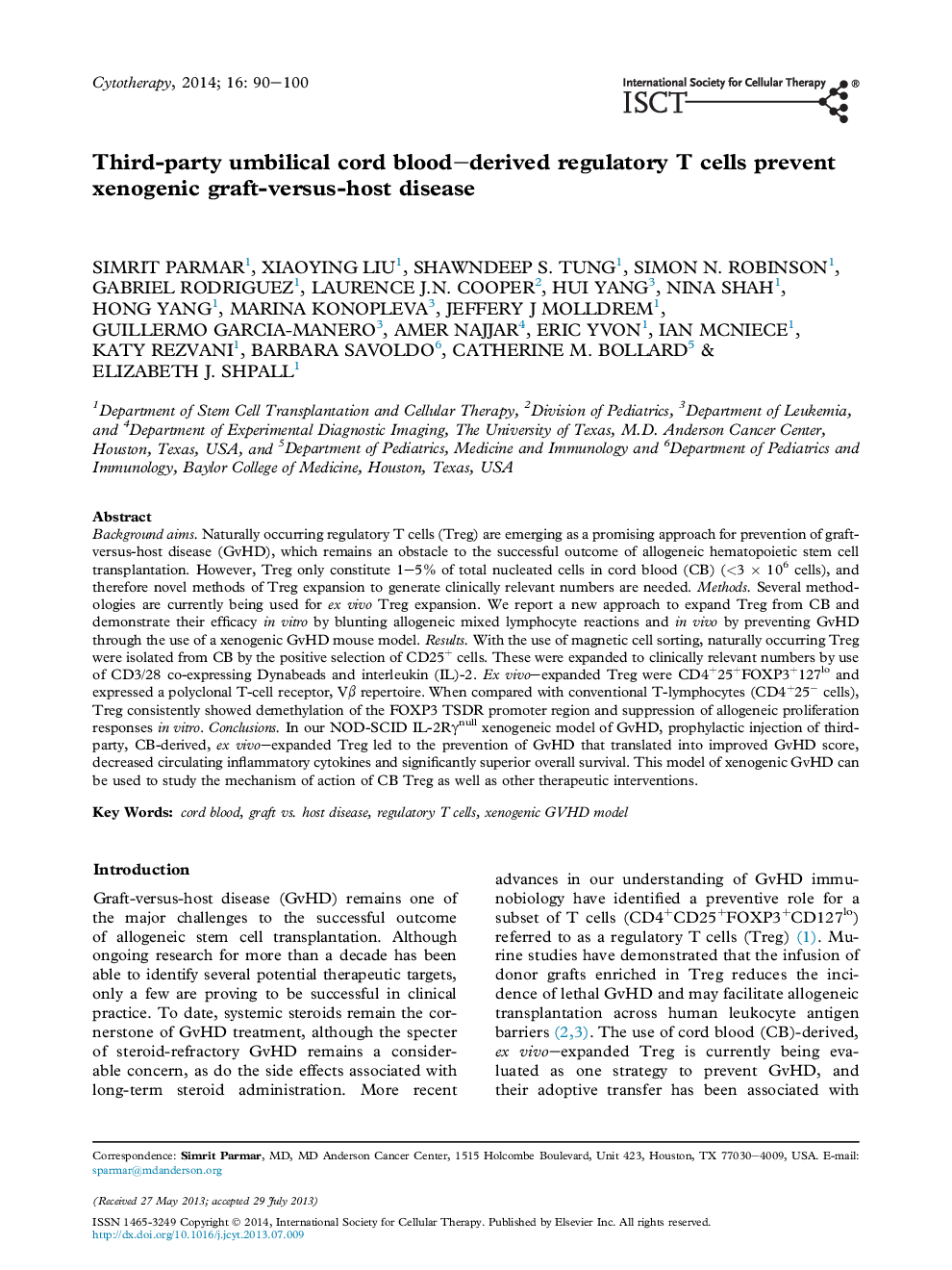| Article ID | Journal | Published Year | Pages | File Type |
|---|---|---|---|---|
| 2172253 | Cytotherapy | 2014 | 11 Pages |
Background aimsNaturally occurring regulatory T cells (Treg) are emerging as a promising approach for prevention of graft-versus-host disease (GvHD), which remains an obstacle to the successful outcome of allogeneic hematopoietic stem cell transplantation. However, Treg only constitute 1–5% of total nucleated cells in cord blood (CB) (<3 × 106 cells), and therefore novel methods of Treg expansion to generate clinically relevant numbers are needed.MethodsSeveral methodologies are currently being used for ex vivo Treg expansion. We report a new approach to expand Treg from CB and demonstrate their efficacy in vitro by blunting allogeneic mixed lymphocyte reactions and in vivo by preventing GvHD through the use of a xenogenic GvHD mouse model.ResultsWith the use of magnetic cell sorting, naturally occurring Treg were isolated from CB by the positive selection of CD25+ cells. These were expanded to clinically relevant numbers by use of CD3/28 co-expressing Dynabeads and interleukin (IL)-2. Ex vivo–expanded Treg were CD4+25+FOXP3+127lo and expressed a polyclonal T-cell receptor, Vβ repertoire. When compared with conventional T-lymphocytes (CD4+25− cells), Treg consistently showed demethylation of the FOXP3 TSDR promoter region and suppression of allogeneic proliferation responses in vitro.ConclusionsIn our NOD-SCID IL-2Rγnull xenogeneic model of GvHD, prophylactic injection of third-party, CB-derived, ex vivo–expanded Treg led to the prevention of GvHD that translated into improved GvHD score, decreased circulating inflammatory cytokines and significantly superior overall survival. This model of xenogenic GvHD can be used to study the mechanism of action of CB Treg as well as other therapeutic interventions.
